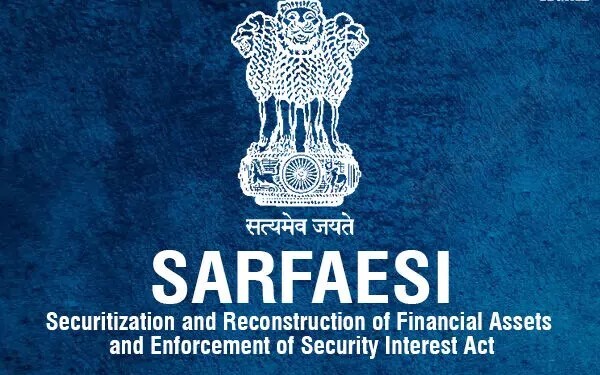The remedies available to a tenant in the event that legal action is taken under Section 14 of the SARFAESI Act while the tenant’s tenancy is still in effect have been clarified by the Allahabad High Court. The Bench of Justices Siddhartha Varma and Shekhar B. Saraf clarified in that regard that two of the following remedies are available:
“a. A tenant, on becoming aware of the proceedings initiated under Section 14 of SARFAESI Act, may approach the authorized officer empowered by the DM/CMM, to take possession of the secured asset. The authorized officer, on receipt of such an application, will then file an affidavit and submit the application for determination of tenancy rights before the DM/CMM. On receipt of such an application, the DM/ CMM will provide an opportunity to the tenant to present his case, and then determine the validity of tenancy in accordance with the law. In case, the DM/CMM concludes that the tenant has a valid lease, in accordance with the law, he may not pass an order under Section 14 of SARFAESI Act, delivering the possession of asset in question to the secured creditor.
Or,
A tenant can surrender possession of the secured asset, of which he claims to be the leaseholder. The lease, in such a case, will be determined in accordance with Section 111 of the TPA 1882.”
Senior Counsel Shashi Nandan represented the respondents, and Senior Counsel Rahul Sripat represented the petitioner. M/s Trilokchand Fabrication Pvt. Ltd. filed a writ petition in this case, requesting that the court overturn an order that had suspended proceedings under Section 14 of the SARFAESI Act because Respondent No. 8 had secured a temporary injunction from a Civil Court. The case’s background included M/s JN Robotics Automation Pvt. Ltd. and its directors’ debt default, which resulted in the auction of their mortgaged property. The injunction order presented challenges for the petitioner, the auction buyer.
The petitioner contested the validity of the injunction, highlighting their lack of participation in the civil lawsuit and its non-binding nature. They argued that injunctions obtained by purported illegal occupants should not be used to obstruct the purposes of the SARFAESI Act. Respondent No. 8, invoking tenancy rights, contested the maintainability of the writ petition under SARFAESI Act Section 17 and upheld the legality of the injunction order, arguing that it did not violate any sections of the SARFAESI Act. Respondent No. 8 and the petitioner made opposing claims; the latter claimed possession rights based on a lease and the Civil Court order, while the petitioner emphasised their rights as a legitimate auction buyer.

The following observations were made by the Court:
a) As required by Sections 107 of the TPA 1882 and 17 of the IRA, 1908, an immovable property lease that lasts longer than a year must be established through a registered instrument. According to Section 107 of the TPA 1882, an oral agreement combined with the conveyance of possession cannot establish a lease that lasts longer than necessary. The bar imposed by Section 49 of the IRA, 1908 precludes the courts from considering an unregistered lease.
b) A tenancy with no specified duration or one that is understood to be month-to-month cannot give a tenant the right to pursue possession of a secured asset after a year has passed and legal proceedings have been filed under Section 14 of the SARFAESI Act.
c) A registered document executed in the tenant’s favour must be used if the tenant wishes to assert possession of a secured asset after proceedings under Section 14 of the SARFAESI Act have been commenced.
d) A tenant has two options when he learns that legal action has been taken under Section 14 of the SARFAESI Act: he can approach the officer in question who has been given permission by the DM or CMM to seize the secured asset, or he can give it up. If the tenant refuses to give up ownership of a secured asset, the authorised officer will file an application with the DM/CMM together with an affidavit that contains the relevant information. Following receipt of such an application, the DM/CMM will ascertain the tenant’s legal rights. The DM/CMM will not issue an order giving the tenant’s ownership of the secured asset to the creditor if he determines that the tenant has a legitimate lease granting him that right.
e) Despite a tenant’s approach, the DRT is prohibited by Section 17 of the SARFAESI Act from giving the renter back ownership of the secured asset. The only authority granted to the DRT is to give the borrower, and no one else, back custody of the secured asset.
f) Section 34 of the SARFAESI Act prohibits the filing of civil lawsuits pertaining to issues that the SARFAESI Act has given a DRT or Appellate Tribunal the authority to handle when read in connection with Section 9 of the CPC 1908. Furthermore, if someone feels that they have been wronged by any action done in accordance with Section 13(4) of the SARFAESI Act, no civil court will accept a suit or other process.
g) Generally, honouring a writ petitioner would be prohibited by the existence of a substitute effective remedy. However, in certain extraordinary situations, a writ petition may be granted even in the presence of a more effective remedy. The following situations fall under this category: a) when the statutory authority violates the principles of natural justice; b) when the statutory authority acts contrary to the provisions of the repealed enactment; and c) when the Act’s validity is contested.
h) The writ of certiorari is only available in very specific situations, and not every legal error would call for the writ to be issued. Nonetheless, the High Court would be required to issue a writ of certiorari in cases where a lower court or tribunal has neglected to carry out its authority. The writ of certiorari was then granted, and the contested order was subsequently overturned.


